Time Recording and Time Off combine to create the Time Management offering in SAP SuccessFactors Employee Central.
They are both self-service-driven features designed to make it easy for employees to enter time worked and to book time off. Before we deep dive into each feature, we should first look at some of the common terminology used for both Time Recording and Time Off, as well as examine where Time Management profiles are assigned to employees. These profiles determine the behavior of various aspects of Time Recording and Time Off for an employee, specifically around making time bookings.
Universal Time Objects
To fully understand Time Recording and Time Off, you must understand the different objects used within the Time Management modules. Knowing these terms will come in handy when reviewing the functionality and setup of each feature, and they should be fully understood prior to completing any requirements gathering or configuration for Time Off (including Leave of Absence) and Time Recording. The following are common Time Management objects.
Time Type
Time Type is a specific category of time to be worked or not worked against which hours are recorded. Examples include Regular Working Hours, Overtime Hours, Maternity Leave, Sick Leave, and so on. When working with Time Recording, Time Type can represent both worked time (known as attendance) and leave. When working with just Time Off, Time Type corresponds to leaves only. Below displays a sample Sick leave Time Type.
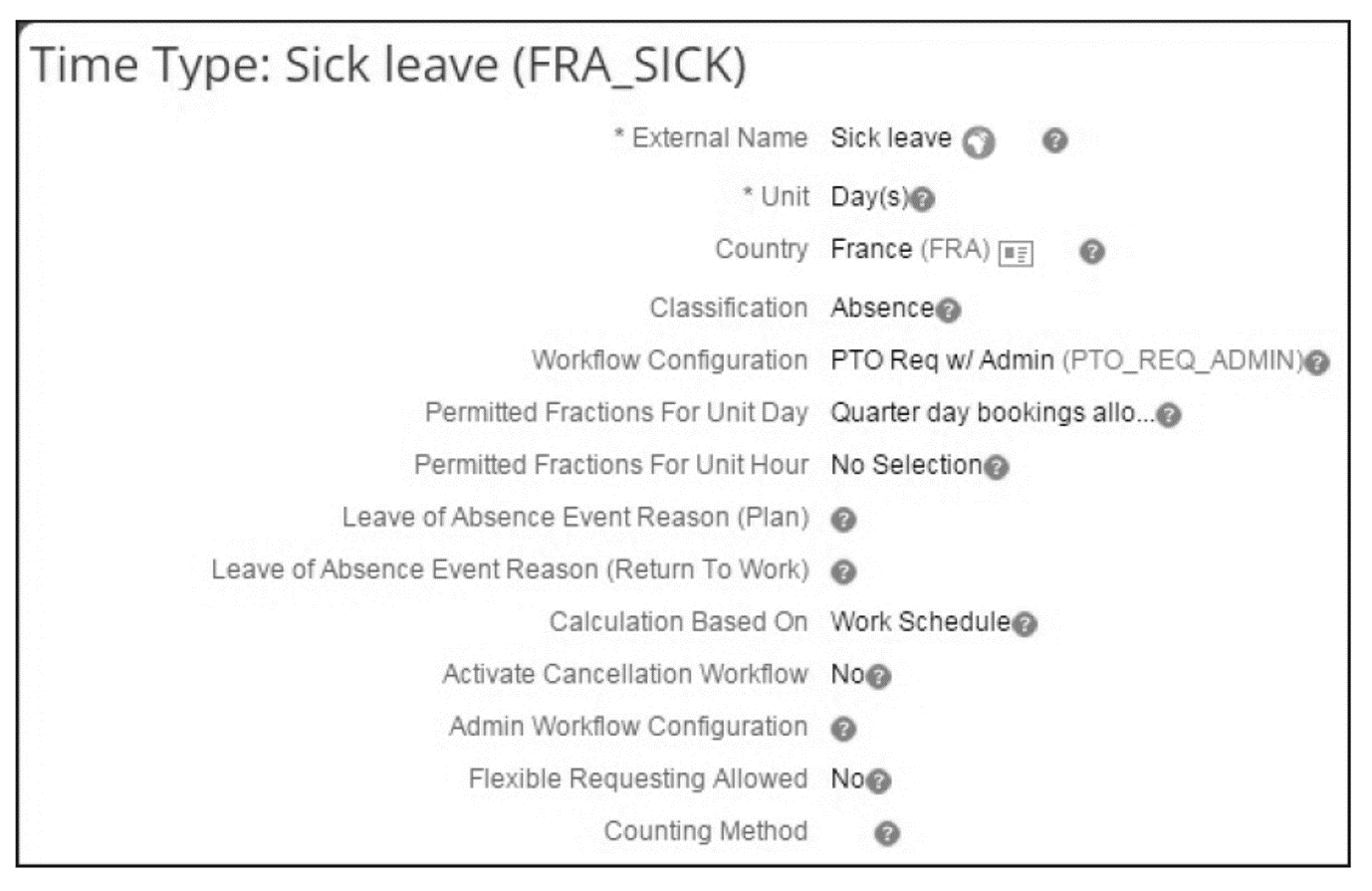
Time Accounts
Time Accounts store the amount of time currently available to use for their respective Time Type. They function similarly to bank accounts in that you can add and withdraw time. Depending on system setup, you may also be able to overdraw on certain Time Accounts. A Time Accounts view is available in Employee Self-Services (ESS). This is helpful because employees can see exactly how many vacation or sick days they have available for use. If these days accrue based on days worked, then the balance of the Time Accounts will continue to increase each period until a withdrawal occurs. Employees can have multiple Time Accounts (Vacation, PTO, Sickness, etc.). The next figure shows how Time Accounts are displayed to end users in the system. In this example, two Time Accounts are shown: Sickness and Vacation.
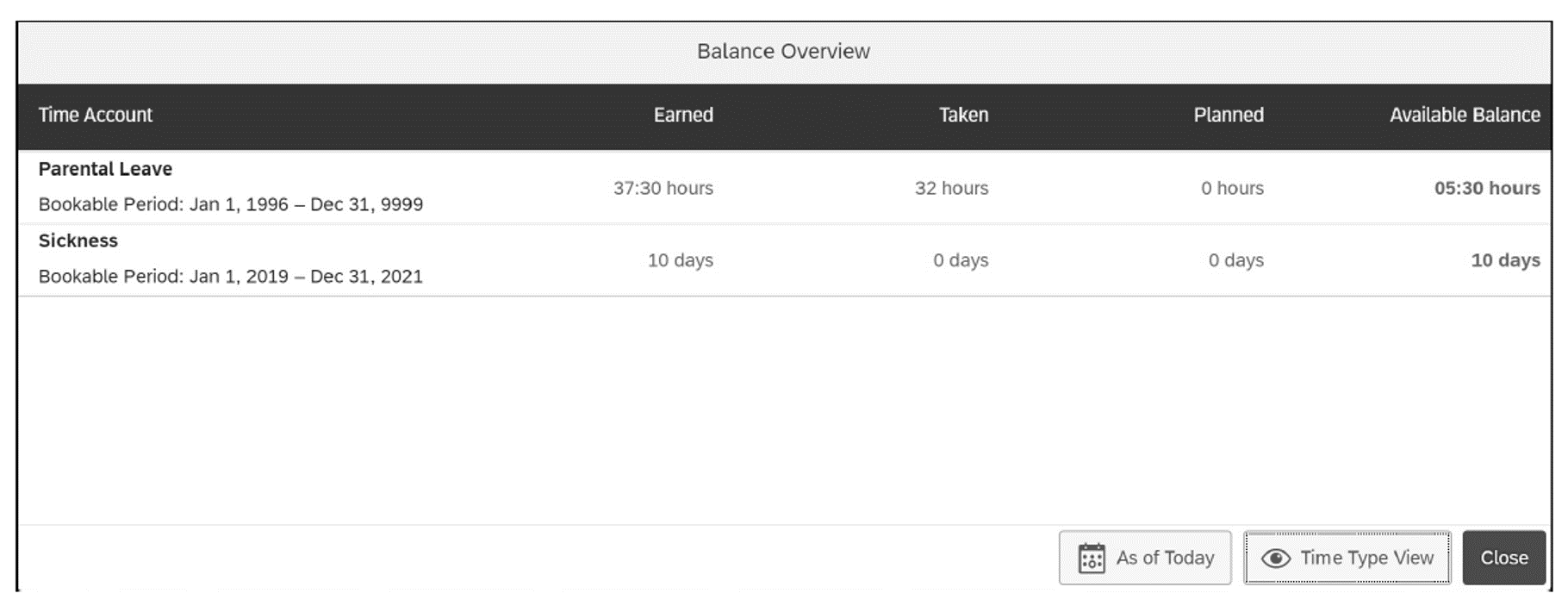
Time Account Type
Any Time Type that needs Time Accounts must have a Time Account Type tied to it. This indicator lets the system know that Time Accounts should be created (see below).
A Business Rule can be created and assigned to a Time Account Type to have accruals automatically created for employees. When creating a Time Account Type, you must specify whether it’s a permanent account (one per employee that continually accrues) or a recurring account, which has a set life span of one year and renews each year (rollovers can be set for certain time periods). The figure below shows a Time Account Type for Sickness Current Year.
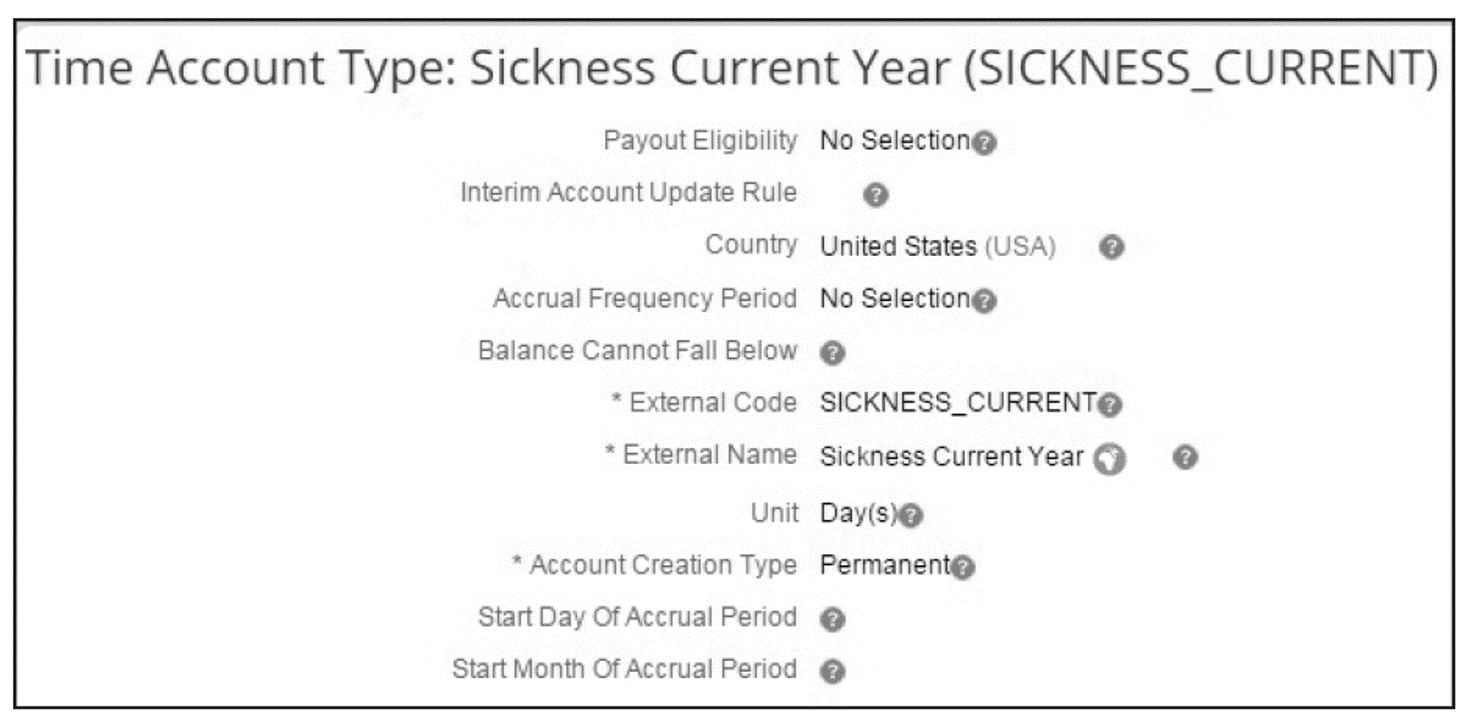
Holiday Calendar
Holiday Calendar is a local calendar populated with public holidays and other days of significance that should be taken into account when an employee requests time off. An employee can only be assigned to one Holiday Calendar, even though multiple calendars can be supported for a particular location. The following figure shows the configured Holiday Calendar for the United Kingdom and the year 2013.
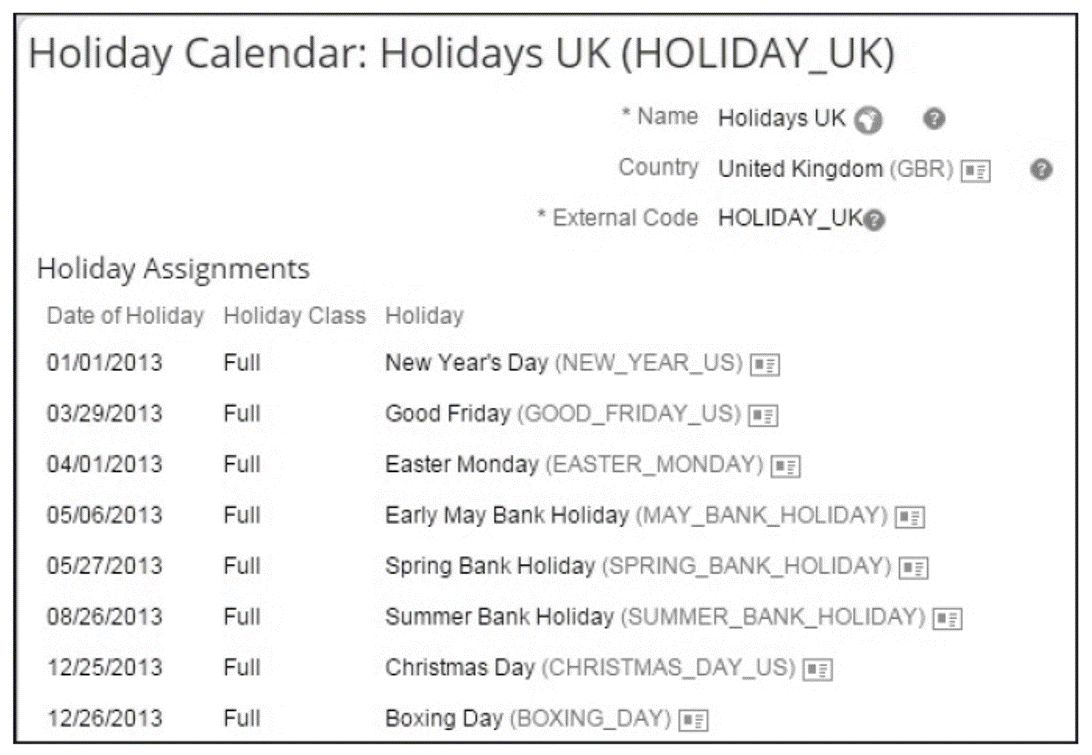
Work Schedule
Work Schedule represents an employee’s typical work pattern, as shown below. When you merge a Work Schedule with a Holiday Calendar, you can accurately predict planned working time, account for overtime or holiday pay, and appropriately withdraw from Time Accounts when time off is scheduled.
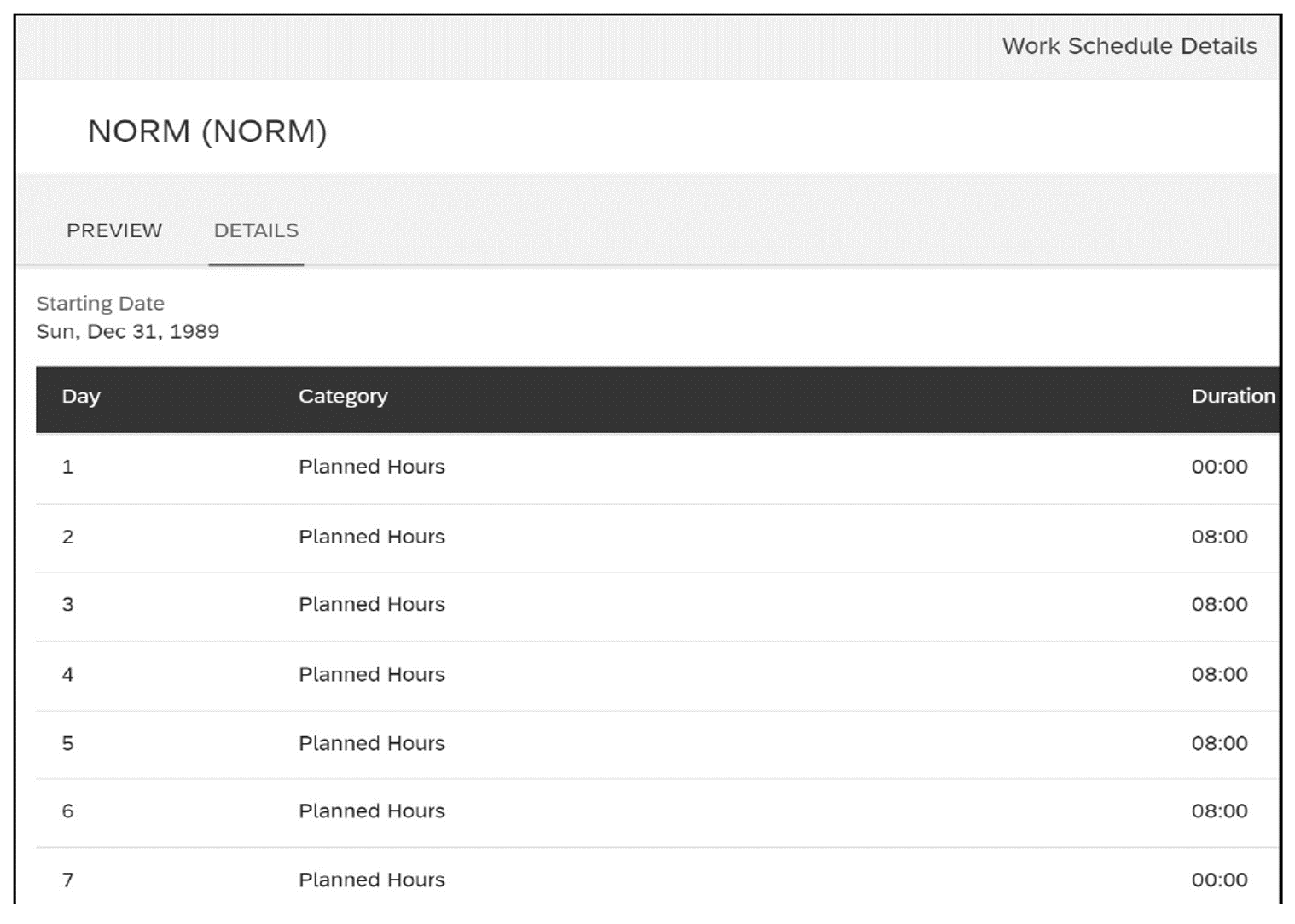
Let’s review some specific objects for Time Tracking and Time Off.
Time Recording Objects
Time Recording uses some objects that are specific to it alone:
- Time Type Group: A Time Type Group contains all the Time Types that should be taken into account during time validation.
- Time Pay Type: Time Pay Type is an indicator that characterizes a Time Type Group as relevant for payroll purposes.
- Time Recording Profile: Time Recording Profile is a listing of all recording Time Types that an employee will have access to on the time sheet. The figure below shows an example.
- Time Recording Admissibility: Time Recording Admissibility indicates how far in the past an employee can amend time sheets that have already been submitted.
- Time Valuations: Time Valuations are used to calculate working time and to transfer the results, in the form of hours, to payroll. Time Account deductions are taken into account.
- Employee Time Valuation Result (ETVR): Employee Time Valuation Result (ETVR) is a single, calculated time evaluation based on the sums of all Time Pay Types. This value is sent to payroll for processing.
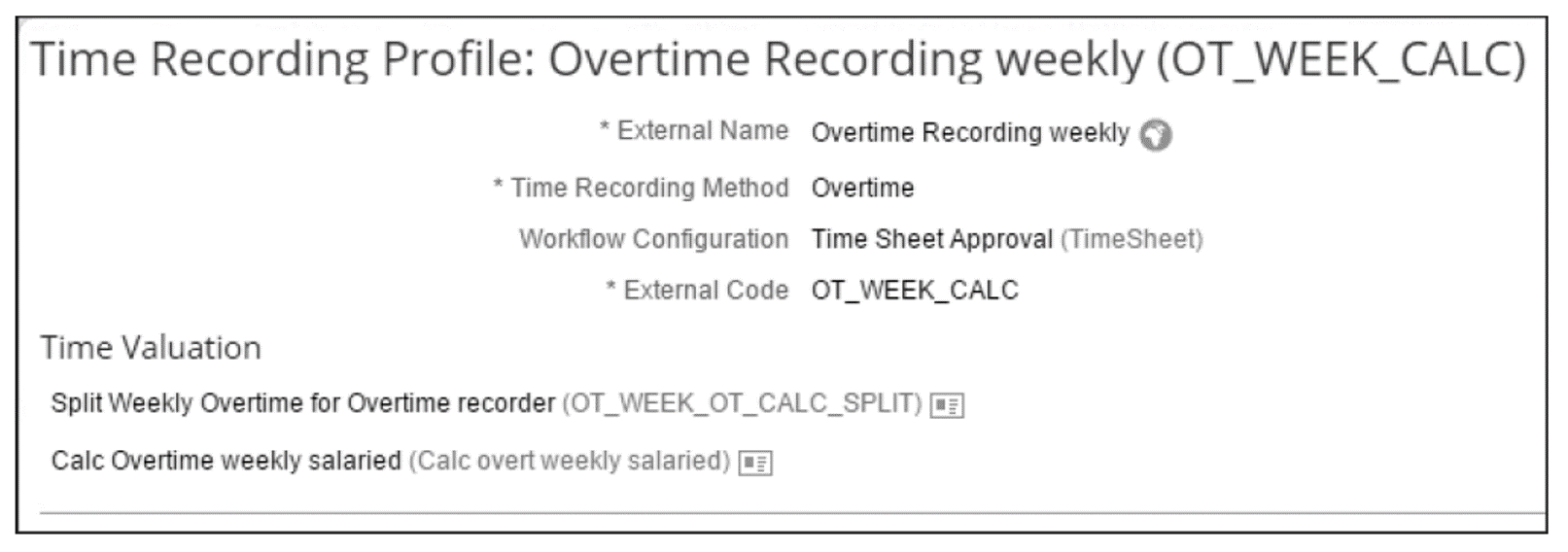
Time Off Objects
Like Time Recording, Time Off has its own object: the Time Type Profile. A Time Type Profile is a determined collection of Time Types assigned to employees based on their location, type, and employment classification. If all the salaried, full-time employees in Canada receive the same time off allotments for Vacation, Sick Time, and Training Days, then it would make sense to have a set time profile to assign to all of those employees that gives them all those allotments. The next figure shows an example of a configured Time Type Profile.
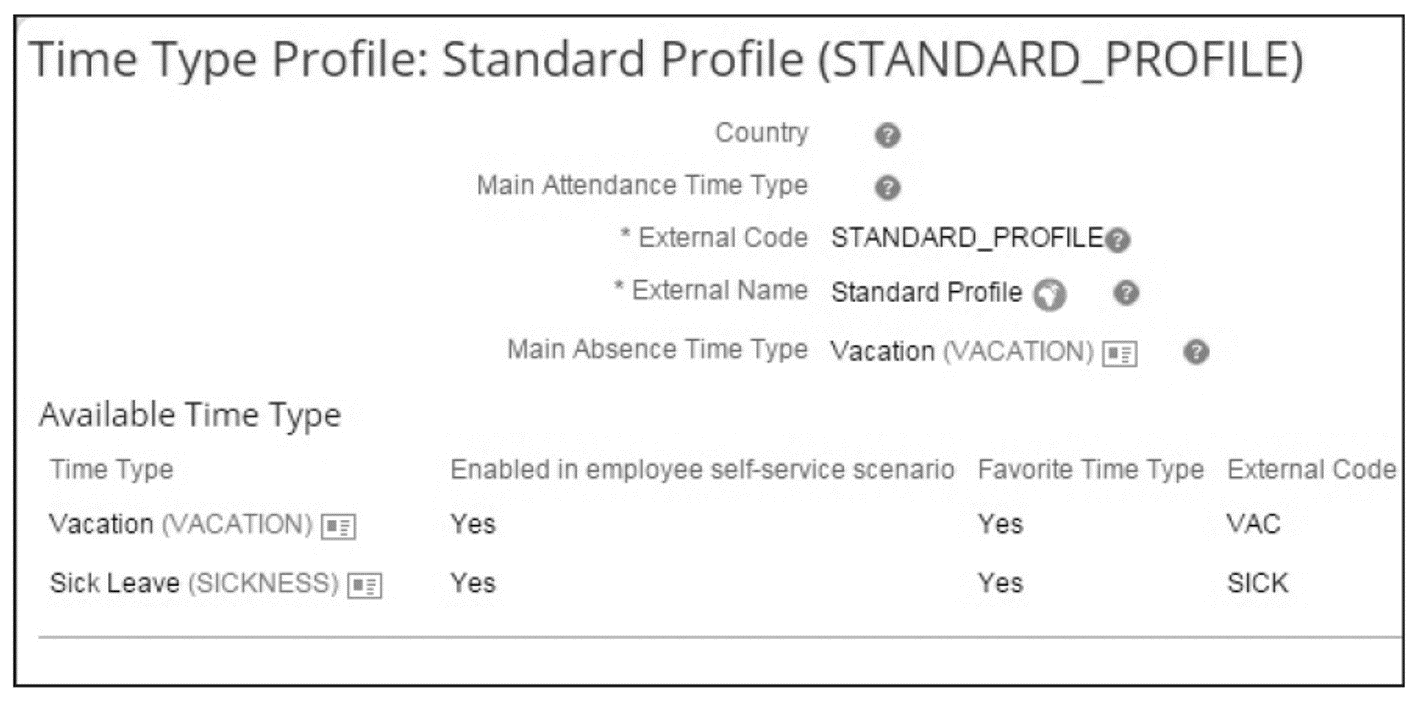
Profiles
Holiday Calendar, Work Schedule, Time Profile, Time Recording Profile, and Time Recording Admissibility are the five fields in an employee’s Job Information portlet that make up the Time Management profile. They are found in the Time Information section in the Job Information portlet of an employee, seen here.

Additional Resources
For more information on Time Recording in SAP SuccessFactors Employee Central—including setup, configuration, and usage—refer to the Time Management implementation guide found at http://help.sap.com/hr_ec under the Implement heading.
Editor’s note: This post has been adapted from a section of the book SAP SuccessFactors Employee Central: The Comprehensive Guide by Luke Marson, Rebecca Murray, and Brandon Toombs.
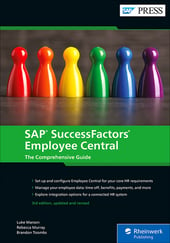


Comments